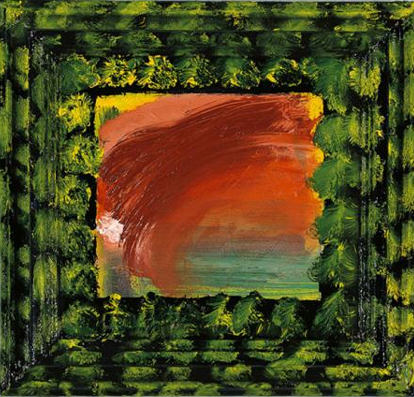5 APRIL 1988 ANDREW GRAHAM-DIXON TALKS TO THE ARTIST HOWARD HODGKIN ABOUT WHERE THE PAINTING STOPS
THE EDGE of a painting is its frontier. It is where the artist negotiates his boundaries with the real world; it is where art begins and ends and where the eye enters and leaves the image. It determines, in an infinitely subtle number of ways, how you read a painting - which, unlike a book or a piece of music, has no pre -determined beginning or end.
Traditionally, the edge functioned as an unobtrusive guide, leading you to the focal centre of the composition. This confident, focusing use of the framing edge - common to virtually all the devotional art of the Renaissance - is brilliantly apparent in Durer's great Christ and the Elders, in the Thyssen Collection. The heads of the elders, arranged around the picture's edge, form a frame within the frame, pointing your attention to the central detail of Christ's hands, the physical symbol of his divine reason.
Edges can also alert you to what an artist has left out. Degas often cropped his paintings to an almost perverse extent - enigmatically cutting off bodies in mid-anatomy, he used the boundaries of the picture to assert the arbitrariness of vision, to remind you that the image could always have been framed differently. The Curtain Falls is a virtual manifesto for his art; at its top edge a blank expanse marks the curtain that has descended to obscure all but the legs of a troupe of curtsying ballerinas; at its bottom edge, mirroring the curtain's abrupt cropping, Degas has himself included a sliver of the orchestral pit from which musicians' instruments poke up in a curious, almost abstract way. Degas' art signals the breakdown of anything you could describe as a universally...

Revealing Neurosis of art at the edge
05-04-1999

